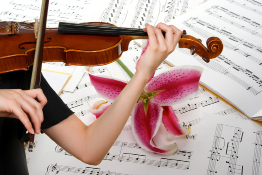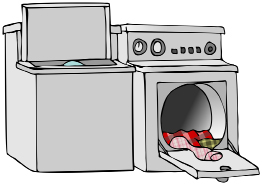Lesson 1: Function Notation
Module 6: Linear Equations
Connect
 Lesson Assessment
Lesson Assessment
Complete the lesson quiz posted under the Quizzes link to the left in moodle or under the Assess tab and ensure your work in your binder (course folder) is complete.
 Project Connection **NOT ASSIGNED**
Project Connection **NOT ASSIGNED**

Hemera/Thinkstock
An important skill for any musician is the ability to sight read music. Sight reading involves the reading and performing of a piece of music without the benefit of having seen it before. There are many benefits of sight reading, not the least of which is the fact that a musician can become more fluent with the language or notation of music. In this project, you will engage in a sight-reading simulation. Don’t worry—you won’t have to learn how to play a musical instrument to do this project.
Now, go to the Unit 4 Project and complete the Module 6: Lesson 1 component of the project.
 Going Beyond
Going Beyond

© caraman/12535393/Fotolia
A function is sometimes compared to a machine. A function takes an input value and processes it into an output value. Similarly, a machine such as a household clothes dryer takes wet clothes (the input) and processes them into dry clothes (the output).
In a typical household, you will also find a machine that reverses the process of a dryer. This machine will take dry clothes and process them into wet clothes. Do you know what machine does this? Hint: The machine is in the illustration. In this Going Beyond section you will explore functions that will reverse the process of a given function.
-
Graph the function f(x) = −2x + 6.
-
Evaluate f(1) by looking at the appropriate point on the graph on f(x).
-
Graph the function
 on the same set of axes that you used to graph f(x).
on the same set of axes that you used to graph f(x).
-
Evaluate g(8) by looking at the appropriate point on the graph of g(x).
-
Compare your answers to questions 2 and 4. How are the two points related?
-
Look for other points on the graphs of f(x) and g(x) that are similarly related.
In mathematics, functions such as f(x) and g(x) are known as inverse functions. You may have the opportunity to study inverse functions in subsequent courses.
Save your graphs and results in your course folder. Your teacher may review your work at a later time.